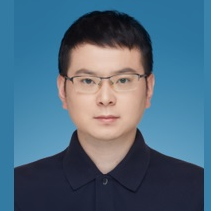Novel Semiconductor Materials for Optoelectronic Applications
A special issue of Crystals (ISSN 2073-4352). This special issue belongs to the section "Materials for Energy Applications".
Deadline for manuscript submissions: closed (20 July 2023) | Viewed by 10323
Special Issue Editors
Interests: ferroelectric materials; optoelectronic semiconductors; first-principles calculations; machine learning; machine learning interatomic potentials
Special Issues, Collections and Topics in MDPI journals
Interests: defect physics in the perovskite-based solar cell absorbers; electronic structure and geometry of grain boundaries of Inorganic photovoltaic materials; defect physics in semiconductors; photoelectrochemical water splitting
Interests: first-principles calculations; atomically dispersed catalysts; ferroelectricity; electronic structure
Special Issues, Collections and Topics in MDPI journals
Special Issue Information
Dear Colleagues,
Over the past few decades, halide perovskites ABX3 (A+ = CH3NH3, CH(NH2)2, Cs; B2+ = Pb, Sn, Ge; X- = Cl, Br, I) have achieved great success in the fields of solar cells, light-emitting diodes, and X-ray/radiation detectors due to their excellent optoelectronic properties, low cost, and simple manufacture. For example, the power conversion efficiency (PCE) of perovskite solar cells has exceeded 25%. Despite the significant progress achieved in halide perovskites-based optoelectronic devices, however, challenges remain in further improving their performance and addressing stability issues to enable future commercialization. As a result, many new semiconductor materials have also been experimentally synthesized or theoretically predicted to replace lead-based halide perovskites in recent years. In this Special Issue, entitled “Novel Semiconductor Materials for Optoelectronic Applications”, researchers will have the opportunity to publish their novel findings related to recent advances in the application of novel semiconductor materials in various optoelectronic devices, including materials development, device characterization, mechanism exploration, theoretical simulation, and so on. We aim to cover a wide range of novel semiconductor materials, including halide perovskites, chalcogenide perovskites, nitride perovskites, perovskite derivatives, and anti-perovskite semiconductors. Both original experimental and theoretical research will be considered.
Dr. Gang Tang
Dr. Chunbao Feng
Dr. Peng Lv
Guest Editors
Manuscript Submission Information
Manuscripts should be submitted online at www.mdpi.com by registering and logging in to this website. Once you are registered, click here to go to the submission form. Manuscripts can be submitted until the deadline. All submissions that pass pre-check are peer-reviewed. Accepted papers will be published continuously in the journal (as soon as accepted) and will be listed together on the special issue website. Research articles, review articles as well as short communications are invited. For planned papers, a title and short abstract (about 250 words) can be sent to the Editorial Office for assessment.
Submitted manuscripts should not have been published previously, nor be under consideration for publication elsewhere (except conference proceedings papers). All manuscripts are thoroughly refereed through a single-blind peer-review process. A guide for authors and other relevant information for submission of manuscripts is available on the Instructions for Authors page. Crystals is an international peer-reviewed open access monthly journal published by MDPI.
Please visit the Instructions for Authors page before submitting a manuscript. The Article Processing Charge (APC) for publication in this open access journal is 2100 CHF (Swiss Francs). Submitted papers should be well formatted and use good English. Authors may use MDPI's English editing service prior to publication or during author revisions.
Keywords
- optoelectronic devices
- photovoltaic performance
- optoelectronic properties
- halide perovskites
- perovskite semiconductors
Benefits of Publishing in a Special Issue
- Ease of navigation: Grouping papers by topic helps scholars navigate broad scope journals more efficiently.
- Greater discoverability: Special Issues support the reach and impact of scientific research. Articles in Special Issues are more discoverable and cited more frequently.
- Expansion of research network: Special Issues facilitate connections among authors, fostering scientific collaborations.
- External promotion: Articles in Special Issues are often promoted through the journal's social media, increasing their visibility.
- Reprint: MDPI Books provides the opportunity to republish successful Special Issues in book format, both online and in print.
Further information on MDPI's Special Issue policies can be found here.







